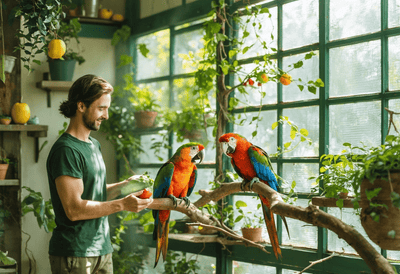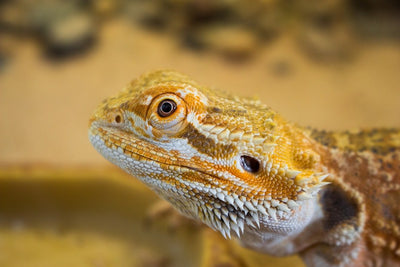
Step into the captivating universe of ant arenas, where miniature worlds come to life with bustling colonies and intricate mazes. Ant arenas offer a unique glimpse into the fascinating lives of these tiny creatures, showcasing their teamwork, ingenuity, and resilience. As you delve into this enchanting realm, you'll witness the intricate network of tunnels, the organized division of labor, and the relentless pursuit of food. From building elaborate structures to navigating challenging obstacles, every moment in the ant world is filled with wonder and excitement. Join us on a journey of exploration and discovery as we uncover the secrets of these remarkable insects and the mesmerizing arenas they call home. Get ready to be amazed by the sheer creativity and complexity of the ant world, where every ant brings a vital role to the table and every arena holds a new adventure waiting to unfold.
Setting Up an Ant Arena
Selecting the Right Container for the Ant Arena
When setting up an ant arena, one crucial aspect to consider is the container. The container will house your ant colony, so it's essential to choose the right one. Look for a container that is spacious enough to accommodate the ants and allows for easy observation. A clear container, such as a glass or acrylic tank, is ideal as it enables you to watch the ants as they go about their daily activities. Ensure the container has a secure lid to prevent any escapes and to maintain a controlled environment for the ants.
Creating a Suitable Environment for the Ants to Thrive
Once you have selected the container, the next step is to create a suitable environment for the ants to thrive. Start by adding a base layer of soil or sand to mimic the ants' natural habitat. This substrate will provide the necessary foundation for the ants to build their nests and tunnels. Consider adding small rocks or pebbles for texture and to create obstacles that simulate the ants' natural foraging conditions.
Provide food and water sources within the arena to ensure the ants are well-nourished. Ants require a balanced diet, including sugars, proteins, and fats. You can offer a variety of foods such as honey, fruits, small insects, and commercial ant food. Water is essential for the ants' survival, so provide a water source like a moist cotton ball or a test tube filled with water. Ensure the water is replenished regularly to prevent dehydration.
Additionally, consider enriching the ants' living space by adding tunnels, branches, or other accessories. These elements not only provide physical stimulation but also encourage natural behaviors like foraging and tunneling. Observing the ants interact with these enrichments can offer valuable insights into their social structure and behavior patterns. Remember to clean the ant arena regularly to maintain a hygienic environment for the colony.
By setting up an ant arena with the right container, substrate, food, water sources, and enrichments, you can create a captivating and interactive habitat for your ant colony to thrive and exhibit their fascinating behaviors. Watching the ants navigate, communicate, and work together within their arena can be a rewarding and educational experience for any ant enthusiast.
Observing Ant Behavior
Monitoring Ant Activities in the Arena
Ants are fascinating creatures that exhibit a wide range of behaviors in their colonies. By closely observing them in a controlled arena, we can gain valuable insights into their daily activities. From foraging for food to caring for their young, each ant plays a crucial role in the overall functioning of the colony.
Noting Down Interesting Behaviors and Interactions
During our observation, we can take note of any interesting behaviors or interactions among the ants. This could include communication through pheromones, cooperation in food gathering, or even conflicts within the colony. By documenting these observations, we can better understand the social dynamics at play within the ant colony.
Studying Ant Foraging Behavior
One of the most intriguing aspects of ant behavior is their foraging activities. Ants follow complex trails to locate food sources and communicate these locations to their fellow colony members. By observing how ants forage for food, we can appreciate their remarkable navigational skills and cooperative behavior.
Exploring Ant Social Structure
Ant colonies have a sophisticated social structure with various castes performing specialized roles. From the queen responsible for reproduction to the workers carrying out different tasks, each member contributes to the colony's success. By studying the social hierarchy and division of labor within the colony, we can unravel the intricacies of ant society.
Documenting Ant Reproductive Strategies
Reproduction is a crucial aspect of ant colonies, with queens playing a central role in ensuring the colony's survival. By documenting the reproductive strategies employed by ants, such as mating flights and nest establishment, we can gain insights into how colonies expand and thrive over time.
Analyzing Ant Defensive Mechanisms
Ants have evolved various defensive mechanisms to protect their colonies from threats. From releasing alarm pheromones to engaging in group defense, ants demonstrate remarkable tactics to ward off predators and rival colonies. By observing these defensive behaviors, we can appreciate the collective intelligence that drives ant colonies' survival.
Conclusion
Observing ant behavior offers a fascinating glimpse into the intricate world of these tiny yet highly organized creatures. By monitoring their activities, noting interesting behaviors, and delving into various aspects of their lives, we can deepen our understanding of ant colonies' dynamics and evolution.
Expanding and Maintaining Your Ant World
Adding Elements to the Arena to Encourage Exploration
One way to keep your ant world engaging is by adding new elements to the arena. This could include introducing new materials like colored sand or twigs, creating different levels with hills or tunnels, or even incorporating a foraging area with hidden treats. These additions will not only provide mental stimulation for your ants but also encourage them to explore and forage more actively.
Creating a diverse environment within the ant world can mimic the ants' natural habitat and promote natural behaviors. Consider adding a variety of textures, scents, and hiding spots to enrich their surroundings. Incorporating live plants can also enhance the aesthetic appeal of the setup while offering additional benefits such as air purification and humidity regulation.
Tips for Keeping the Ant Arena Clean and Sustainable
Maintaining a clean and sustainable ant world is crucial for the health and well-being of your ant colony. Regularly remove any food debris to prevent mold growth and contamination. Consider rotating or replacing elements in the arena to prevent stagnation and introduce novelty for the ants. Additionally, observe the ants' interactions with the environment to identify their preferences and make adjustments accordingly.
Proper ventilation is essential to prevent the buildup of excess moisture, which can lead to mold growth and respiratory issues for the ants. Ensure that the arena has adequate airflow without creating drafts that may disturb the colony. Monitoring temperature levels and providing appropriate lighting conditions can also contribute to a conducive environment for your ants.
Incorporating a designated waste disposal area within the arena can streamline cleaning efforts and help maintain hygiene. Consider using a separate container or section where food scraps and other waste can be deposited and easily removed. This practice not only promotes cleanliness but also aids in controlling potential pest infestations.
Regular observation and interaction with your ant world are key to detecting any changes in behavior or health early on. Establish a routine for inspecting the colony, checking for signs of stress, disease, or overcrowding. By staying proactive and attentive, you can address issues promptly and ensure a thriving and sustainable environment for your ant colony.
Conclusion
In creating a fascinating ant world with ant arenas, we have delved into the intricate and captivating world of these tiny creatures. By designing and maintaining ant arenas, we not only provide a stimulating environment for the ants but also gain valuable insights into their behavior and social structures. Through this hands-on experience, we develop a deeper appreciation for the complexity and beauty of the natural world, showcasing the wonders that lie beneath our feet. Let's continue to explore, learn, and marvel at the fascinating ant world that surrounds us.






